Struggling with beatmatching and blending songs smoothly?
Learning how to properly set up and use DJ controller hardware and software is essential to unlocking seamless song transitions.
Let’s explore key steps like choosing compatible gear, configuring settings, beatmatching tracks and applying advanced mixing techniques using all available controls. Soon you’ll be DJing like a pro.
How To Use A DJ Controller
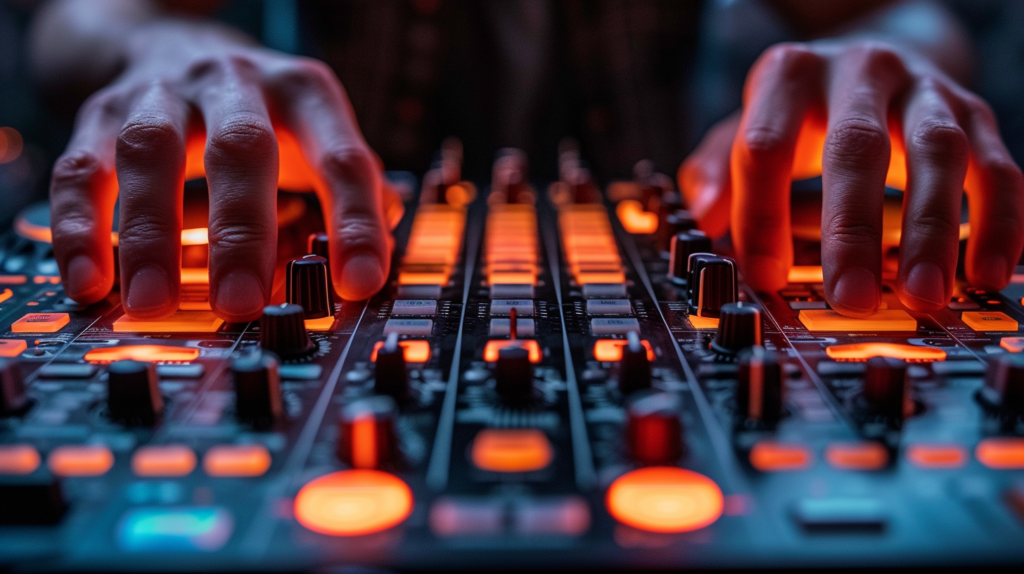
Using a DJ controller for the first time can definitely feel overwhelming with so many buttons, knobs and features. But learning basics like connecting devices, loading songs to decks, beatmatching tempos and crossfading between tracks can get you mixing music in no time. We explore easy beginner steps as well as advanced controller techniques in detail below.
Choose Your DJ Controller
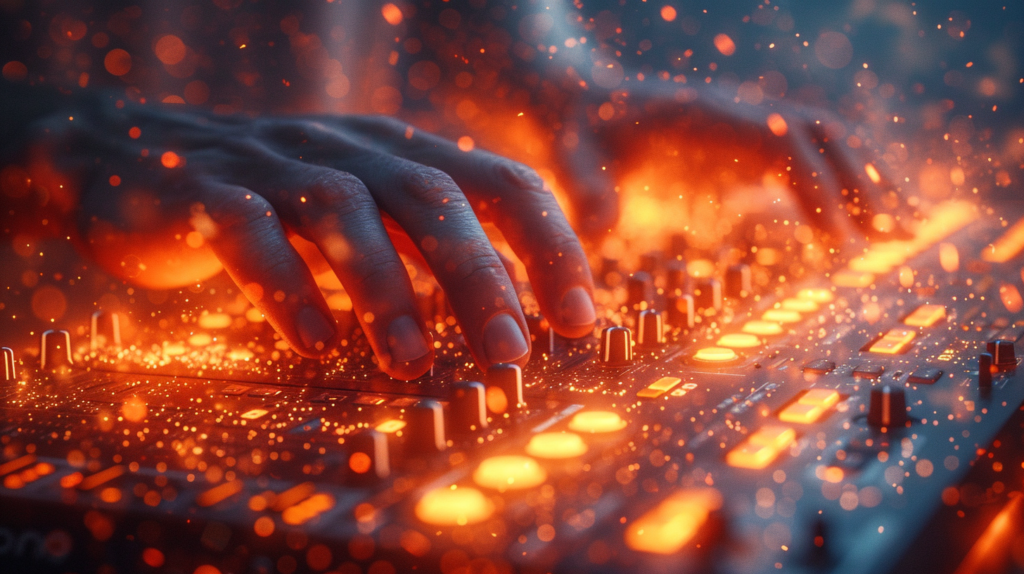
When selecting a DJ controller, there are a few key factors to consider. The first is the number of decks or jog wheels the controller has. Entry-level controllers often have just two decks, while advanced controllers may have four or more. If you want to do more intricate or layered mixes, having four decks allows you to seamlessly mix between more tracks. You’ll also want to decide if you prefer CDJ-style jog wheels for scratching and pitch bending, or simpler models that are focused more on mixing.
Effects controls are another item to compare between DJ controllers. Some come with extensive built-in effects like echo, reverb, flanger and more that can be applied to tracks. Others rely more on the DJ software to supply effects. Consider what types of effects you might want access to directly on the hardware when shopping for a controller. Inputs and outputs should also be assessed – having multiple outputs can allow for separate cue/booth monitoring versus the house speakers. Evaluating all these aspects will help narrow down choices and ensure the controller matches your skills, preferences and setup.
There is also a difference between controllers aimed at entry-level users versus those with advanced features for experienced DJs. Beginner controllers usually have simplified layouts and basic features to learn on, while pro-grade controllers have thicker metal construction, larger jog wheels and far more controls. Budget, features needed and DJing experience level will dictate which tier fits best. It’s also important to check compatibility – make sure the controller works with your preferred DJ software and operating system before purchasing. Doing research is well worth it to end up with a controller tailored to your needs.
Set Up Your DJ Controller
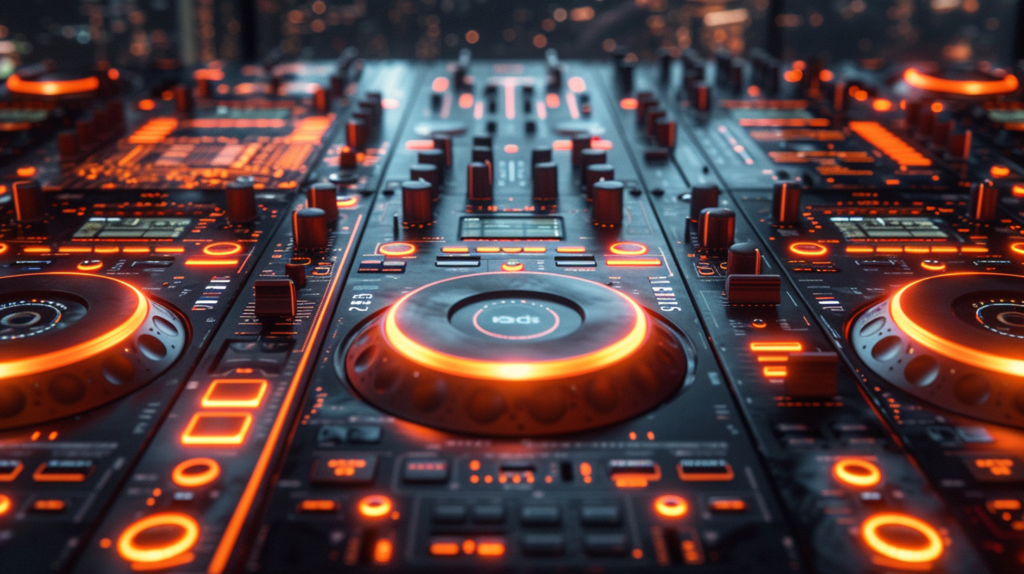
Once you’ve purchased your preferred DJ controller, setting it up properly helps everything run smoothly. Start by connecting the power supply so the unit turns on. Make sure any necessary drivers are installed on your laptop if prompted when you plug into a USB port. Audio outputs allowing monitoring and connection to speakers should also be hooked up, along with headphones into the designated output.
If the controller interfaces directly with DJ software, you’ll need to configure it within the settings so all functions are assigned and mapped properly. Take time to test every button, jog wheel, fader and pad to confirm complete operation with the software. You may be able to customize specific functions further to your preferences. Setting levels and getting a handle on the sensitivity and response is also important during initial setup. Taking it slow goes a long way – don’t assume everything works right off the bat. Methodically check each control while audio is playing to dial in settings until you are comfortable with the response and workflow.
Learn Your DJ Software Basics
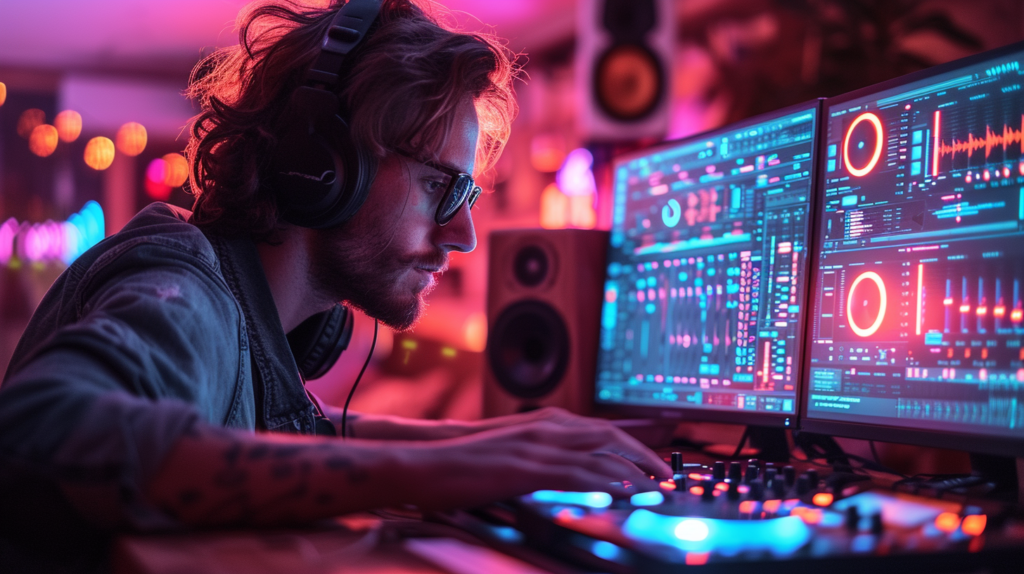
Before jumping into mixing tracks with a controller, it’s important to understand the basics of whatever DJ software you decide to use. Most all platforms like Serato, Traktor and Rekordbox share common elements and functions. There will be music libraries and file browsers to organize and search your track collection. Waveforms provide visual representations of the tracks currently loaded. Transport controls for cueing, play and pause sit alongside each waveform.
When loading tracks to a deck, setting cue points is essential for quick access to key parts of the song for mixing. Cue points can be dropped manually at specific points by hitting a button when playback reaches that point. DJ software saves their position for return access later. Setting well-placed cue points improves live transitioning immensely.
EQ controls are three-band equalizers for high, mid and low frequencies. These are used to filter out conflicting frequencies when blending two tracks. For example, lowering the bass on the currently playing track while mixing in the next song prevents muddled low end. Using EQs is vital for clean mixes. The crossfader slides between left and right channels, allowing the DJ to transition from one song to another. Even just learning these basics will provide a solid foundation for mixing.
Mix Your First Tracks
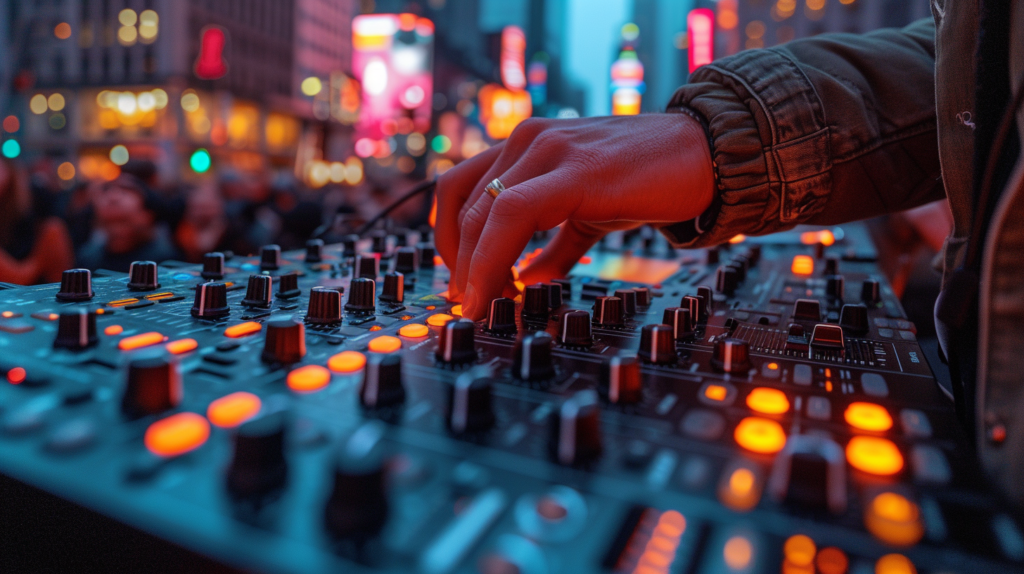
Once familiar with the software and controller, try loading tracks to the individual decks and mix your first song transitions. Set cue points first in both tracks so you can easily return to critical parts. Match the BPMs of the songs by ear or with sync functions. If beats sound mismatched, use pitch sliders or jog wheels to adjust tempo until their rhythm aligns.
When ready to mix from deck one to deck two, fade out the low end of deck one by lowering its bass EQ knob while simultaneously sliding the crossfader across towards deck two. Bring up the bass on deck two as you fade it in to take over fully from the previous track. Continue adjusting EQs and the crossfader until only song two plays. Use cue points to drop in vocals, instrumental hits or drops to make transitions more dramatic. Don’t rush the process – smooth blends come from careful mixing.
Transitioning between songs a few times helps understand the interplay between controls like EQs, channel faders and the crossfader. Work on beating matching by ear without relying solely on BPM readouts or sync buttons. Listen critically to how tracks interplay through transitions. Shifting elements at precisely the right moments keeps mixes energized. With practice, seamlessly blending tracks becomes second nature.
Advance Your DJ Skills
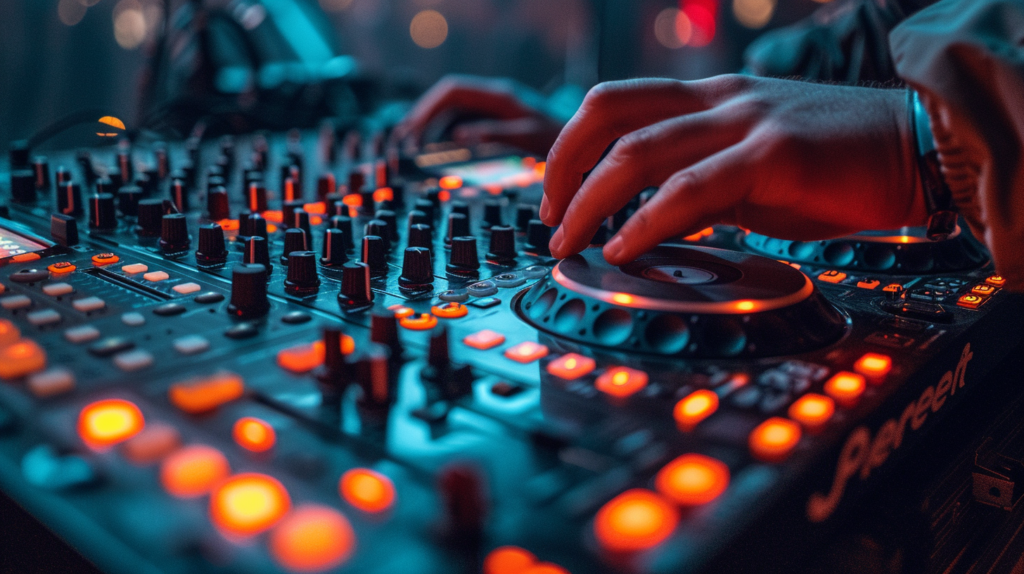
Once comfortable mixing tracks and making basic transitions, further DJ techniques help take sets to the next level. Beatmatching tracks completely by ear without any visual aid demands sharp listening skills but offers unmatched rhythm syncing. Mixes flow incredibly cohesively when tracks are blended through raw musical intuition alone. Training your ears by thoroughly knowing track selections speeds proficiency.
Applying effects during transitions builds anticipation, accentuates specific parts and adds unique flair. Use echo and reverb effects to create rising buildups heading into a major drop. Quick filter sweeps introduce impending tracks by teasing their sound. Finger drumming pads provide percussive flourishes. Get creative blending effects on alternate decks during mixes for original transitions.
Looping small segments lets you extend and repeat distinct phrases while mixing another track underneath. It could be a vocal snippet, melody line or bar of drums to liven stale moments. Load loops from cue points for ready access. Juggle looping parts from one song against full playback of another for mashup-style mixes.
For controllers with jog wheels that allow scratching, practice manual backspinning and scratch routines to develop turntablist skills. Perform only during appropriate moments, as excessive scratching overcrowds mixes. But sprinkled tastefully at times, scratching demonstrates broader command and stage presence. Use all available features masterfully at the right times to excel as a DJ.
Customize Your Controller

While most DJ controllers work sufficiently right from factory default settings, customizing controls to personal preferences dial in workflows even further. Start by remapping buttons, knobs or pads if you desire certain functions in different locations than the default layout. Renaming controls clearly reflects specialized uses you designate.
Set cue points on the fly by assigning open buttons or pads specifically for that job. Dedicate effect pads to build intensive sound with one finger press instead of manually tweaking multiple knobs. Create mega mixes with mashup style looping by assigning loops or full songs to different pads. Map sections from completely different songs across several pads for impromptu remixing live during sets.
Craft more intricate transitions by assigning sound effect parameters like filter sweeps to available knobs or faders. Tweak custom effects mapped to buttons to punctuate drops or breakdowns in unordinary ways. Ultimately customize controls in any manner that best aids individual mixing styles, making the controller an extension of personal performance. As comfort level grows, reconfigure the controller to match at every stage of development.
Conclusion
In summary, choosing the right DJ controller that matches your skills and budget is the first key step. Setting it up properly and learning basics of the DJ software ensures everything works smoothly. Beatmatching and blending songs utilizing all available controls builds real mixing proficiency over time. As advanced techniques are mastered through regular practice, consider customizing the controller to fit specialized preferences. With so many options now available at various price points, DJ controllers put professional grade mixing capability right at your fingertips.
